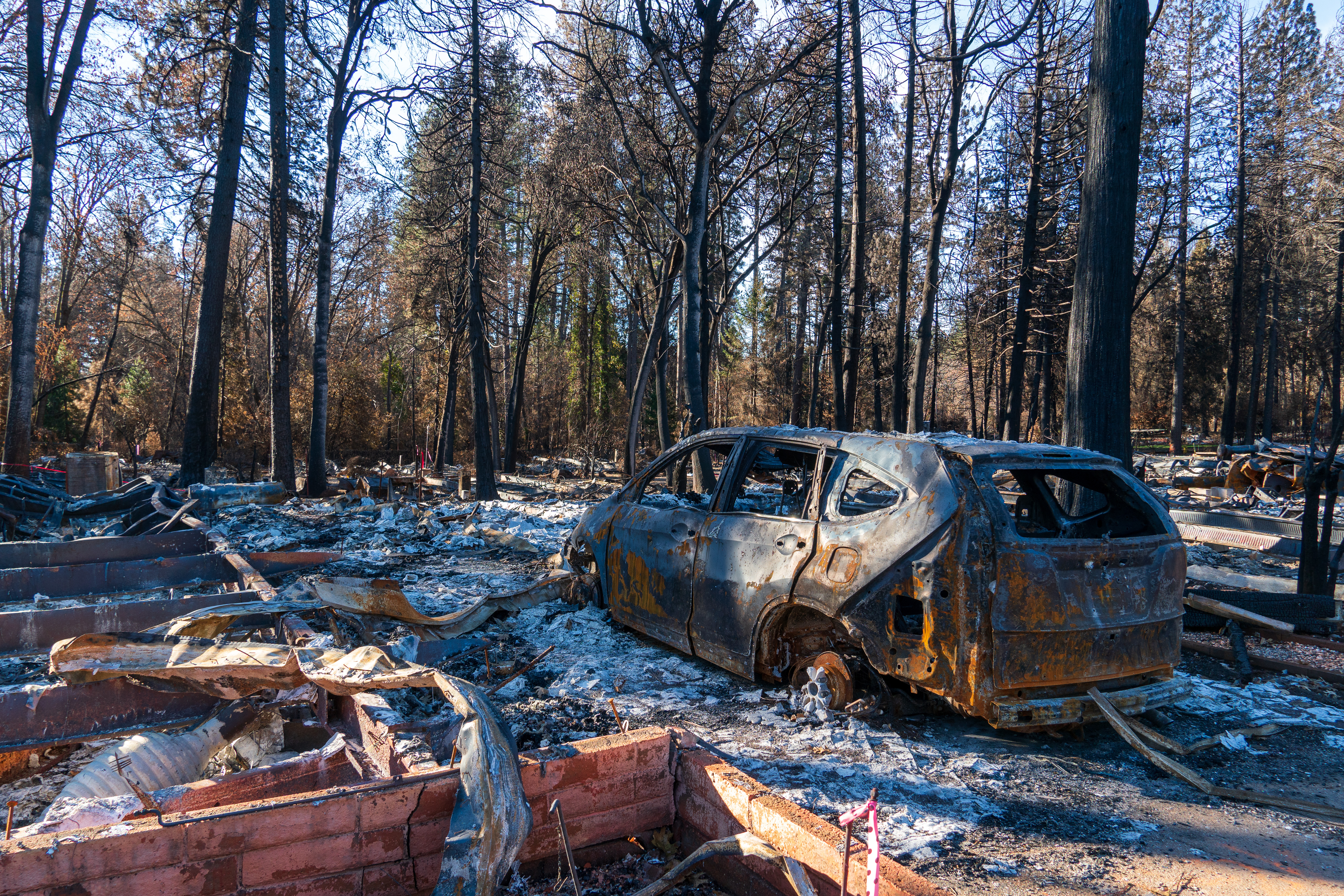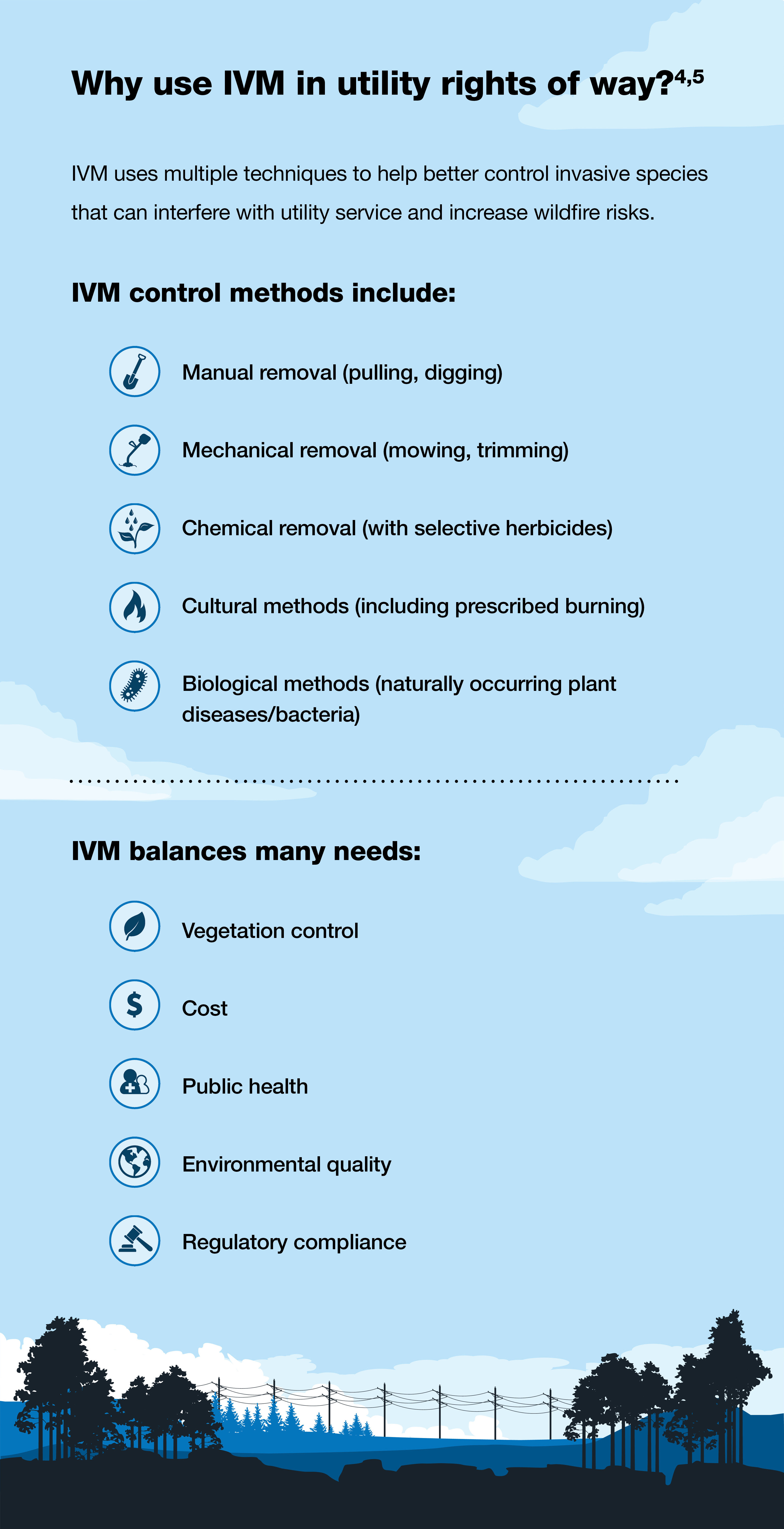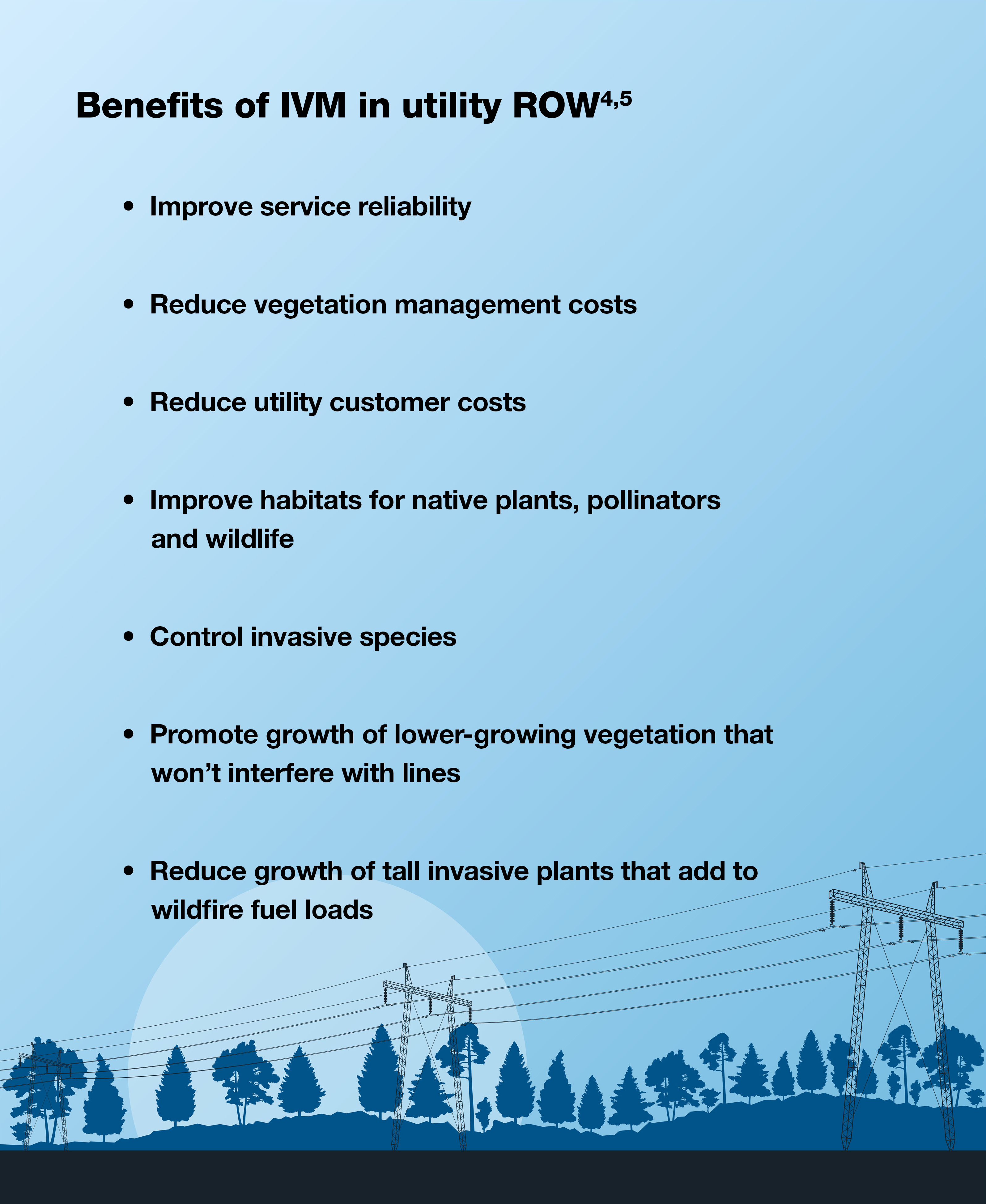Managing Vegetation to Mitigate Utility Interruptions and Wildfires

In the early morning hours of November 8, 2018, a fire broke out in Butte County, California, about a hundred miles north of Sacramento. Driven by extremely dry conditions and gusty winds, the fire spread nearly 8 miles in just 45 minutes. Within 12 hours, it had destroyed two towns, Concow and Paradise. It took over two weeks to fully contain the fire. More than 150,000 acres were burned, over 19,000 structures were destroyed and 85 lives were lost. The Camp Fire became the deadliest and most destructive fire in California history. An investigation revealed the fire was ignited by Pacific Gas Electric (PG&E) power lines.1 In the aftermath, PG&E has invested some $200 million in efforts to update infrastructure, aid members of communities displaced by the fire and hopefully prevent a similar future tragedy. The company’s website states that it has reached legal settlements valued at approximately $25.5 billion and that this “will be the largest rebuilding effort in our service area since the 1906 San Francisco earthquake.”2 After the Camp Fire, managing utility issues and wildfire risk would never be the same.

The Camp Fire in 2018 was sparked by utility lines. It was the most deadly and destructive fire in California history.
While the Camp Fire is an extreme example of what can go wrong when utility lines interact with dry landscapes, the challenges that faced PG&E can be found across the U.S. As droughts get more extreme, weather patterns change and landscapes are invaded by non-native vegetation, fire threats around utility equipment continue to grow.
Even with their huge investment in improvements, including burying many lines, PG&E still has to cut power when wildfire risks are high. PG&E is not alone in having to interrupt service due to issues in the landscape. A recent survey showed that 23.2% of service outages nationwide can be attributed to vegetation.3 Loss of power can last days, becoming much more than an inconvenience for customers and interfering with critical services like communication and use of medical devices, not to mention associated dangers from factors like improper use of generators and heaters.
Integrated vegetation management (IVM) recognizes that the increasingly complex environmental challenges around utility rights of way (ROW) call for a coordinated approach. IVM takes a big-picture, long-term view of fostering landscapes around utility lines to reduce maintenance and costs, improve fire safety and minimize service interruptions.
An IVM approach can include cultural, biological, mechanical and chemical control techniques.4 Here, we’ll focus specifically on how chemical and mechanical control—such as mowing—can be used together as part of IVM to help reduce outages and fire risks.

An IVM approach incorporates herbicides that are designed to control certain invasive and noxious plant species, rather than clearing a landscape of all vegetation. Maintaining low-growing native vegetation, like forbs, herbs and shrubs through the use of a selective herbicide can help choke out invasive species that grow faster and taller and add to fuel loads. Examples of selective herbicides that work well in an IVM approach for ROW include Garlon® 4 Ultra, Vastlan® and TerraVue® herbicides from Corteva Agriscience, all of which also have grass-friendly profiles.
With IVM, chemical treatment can and should take many forms and vary in timing. Practices can include:
Chemical side trimming applications, which help control specific branches or sides of trees that threaten to grow into utility equipment. Spot treatments can be used to control entire trees or brush species, followed by mechanical removal of controlled vegetation as needed.
Dormant season applications are used over the winter to help control vegetation throughout the winter or extend the treatment window. This practice can be useful for catching up on treatments or getting a head start on the season.
Physical removal of vegetation using mowing or trimming can still be part of an IVM program but should be performed selectively. Studies have shown that using mowing and trimming exclusively can stimulate re-growth, requiring more frequent re-treating. Mowing also tends to remove all vegetation in its path—native, beneficial plants as well the as noxious, invasive ones. Invasive species are likely to take up home in these bare areas, crowding out lower-growing native plants that pose less of a threat to utility equipment. Physical removal can be complemented with herbicide treatments to help control vegetation for longer, reducing the frequency of mowing and trimming

One of the great upsides of an IVM approach is that it enhances the biodiversity of utility rights of way. Selective herbicides and targeted physical vegetation removal help maintain landscapes where pollinators and wildlife can thrive alongside beneficial plants. This helps make the entire ecosystem around rights of way healthier. Ideally, the landscape once again becomes dominated by native plants, which grow more slowly, remain low to the ground and don’t dry out as quickly as invasives.
IVM isn’t just about balancing concerns about infrastructure and the environment. It can also help balance the books. Vegetation management is often the most expensive operational and maintenance cost for utility companies. Power disruptions also have wider economic implications, costing the U.S. an estimated $120 billion every year.5 A long-term IVM approach helps nurture a landscape that naturally requires less maintenance and intervention to mitigate fire risk and eventually becomes more self-sustaining.
Since the days of Edison’s lightbulb, Americans have come to assume the flow of electricity to our homes will be safe, steady and affordable. For utility companies, integrated vegetation management can help reduce costs, mitigate wildfire risks and ensure reliable service—delivering on the trust customers have placed in them for generations.
References
1 Jeffrey Zimmerman, “Service Assessment November 2018 Camp Fire” (National Weather Service, NOAA, January 2020), https://www.weather.gov/media/publications/assessments/sa1162SignedReport.pdf.
2 “PG&E’s Actions Since the 2018 Camp Fire” (Pacific Gas and Electric Company), accessed February 15, 2023, https://www.pge.com/en_US/safety/emergency-preparedness/natural-disaster/wildfires/pge-actions. page.
3 Richard Hauer and Randall Miller, “More than 20% of Outages Attributed to Vegetation: UVM Survey,” T&D World, July 14, 2021, https://www.tdworld.com/vegetation-management/article/21169246/morethan-20-of-outages-attributed-to-vegetation-uvm-survey.
4 “Integrated Vegetation Management (IVM) Practices around Utility Rights-Of-Way,” Pesticide Environmental Stewardship Program (PESP) (U.S. Environmental Protection Agency, January 17, 2023), https://www.epa.gov/pesp/integrated-vegetation-management-ivm-practices-around-utility-rights-way.
5 “Benefits of Integrated Vegetation Management (IVM) on Rights-of-Way,” Pesticide Environmental Stewardship Program (PESP) (U.S. Environmental Protection Agency, November 14, 2022), https://www.epa.gov/pesp/benefits-integrated-vegetation-management-ivm-rights-way.
State restrictions on the sale and use of Garlon® 4 Ultra apply. Consult the label before purchase or use for full details. Under normal field conditions, TerraVue® is nonvolatile. TerraVue has no grazing or haying restrictions for any class of livestock, including lactating dairy cows, horses (including lactating mares) and meat animals prior to slaughter. Label precautions apply to forage treated with TerraVue and to manure and urine from animals that have consumed treated forage. TerraVue and Vastlan are not registered for sale or use in all states. Contact your state pesticide regulatory agency to determine if a product is registered for sale or use in your state. Consult the label for full details. Always read and follow label directions.